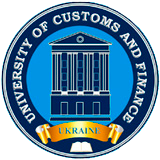INCREASING EFFICIENCY OF INTERACTION BETWEEN THE OBJECT AND SURROUNDING TARGETS USING POSITIONING METHODOLOGY
Keywords:
positioning methodology; space object positioning; enemy tar-gets locating; friendly targets locating
Abstract
In this article the idea of the theoretical model of the object (O) positioning in space is discussed. The space object positioning takes place on the basis of the enemy targets (ET) and friendly targets (FT) locations. The effective location criterion is determined – the maximum number of ET and the minimum number of ET which falls into the damage zone. Also, in the article the analysis of object own safety is carried out. Proposed model expands the criteria for assessing the characteristics of the object in relation to the environment in which the object is located.
References
1. Gintis H. Game Theory Evolving: a Problem-centered Introduction to Modeling Strategic Behavior. Princeton University Press, 2000. 531 p.
2. Miller J. D. Game Theory at Work: How to Use Game Theory to Out-think and Outmaneuver Your Competition. McGraw-Hill Education, 2003. 228 p.
3. Shoham Y. Multiagent Systems: Algorithmic, Game-Theoretic, and Logi-cal Foundations. Cambridge University Press, 2008. 504 p.
4. Leyton-Brown K. Essentials of Game Theory: A Concise Multidiscipli-nary Introduction. Morgan & Claypool Publishers, 2008. 93 p.
5. Cubitt R. and Sugden R. Common Knowledge, Salience, and Convention: A Reconstruction of David Lewis’s Game Theory // Economics and Philosophy. 2003. Vol. 19. P. 175–210.
6. Meyer John-Jules and Wiebe van der Hoek. Epistemic Logic for AI and Computer Science. New-York: Cambridge University Press, 2004.
7. Vaittinen T., Karkkainen T., Olsson T. A diary study on annotating loca-tions with mixed reality information // Proceedings of the 9th international con-ference on mobile and ubiquitous multimedia. MUM 10 ׳ . New-York, NY, USA:
ACM; 2010. P. 21:1–21:10.
8. Wither J., Coffin C., Ventura J., Hollerer T. Fast annotation and model-ing with a single-point laser range finder // 7th IEEE/ACM international sympo-sium on mixed and augmented reality, 2008 (ISMAR 2008); 2008. P. 6–8.
9. Castle R., Klein G., Murray D. Video-rate localization in multiple maps for wearable augmented reality // 12th IEEE international symposium on weara-ble computers, 2008 (ISWC 2008); 2008. P. 15–22.
10. Wither J., Diverdi S., Hollerer T. Using aerial photographs for improved mobile ar annotation. In: Proceedings of the 5th IEEE and ACM international symposium on mixed and augmented reality. ISMAR 06 ׳ . Washington, DC, USA:
IEEE Computer Society; 2006. P. 159–162.
11. Dave K., Dinesh K. CInDeR: Collision and Interference Detection in Real-time using graphics hardware // Proc. Of Graphics Interface, May 2003, P. 73–80.
2. Miller J. D. Game Theory at Work: How to Use Game Theory to Out-think and Outmaneuver Your Competition. McGraw-Hill Education, 2003. 228 p.
3. Shoham Y. Multiagent Systems: Algorithmic, Game-Theoretic, and Logi-cal Foundations. Cambridge University Press, 2008. 504 p.
4. Leyton-Brown K. Essentials of Game Theory: A Concise Multidiscipli-nary Introduction. Morgan & Claypool Publishers, 2008. 93 p.
5. Cubitt R. and Sugden R. Common Knowledge, Salience, and Convention: A Reconstruction of David Lewis’s Game Theory // Economics and Philosophy. 2003. Vol. 19. P. 175–210.
6. Meyer John-Jules and Wiebe van der Hoek. Epistemic Logic for AI and Computer Science. New-York: Cambridge University Press, 2004.
7. Vaittinen T., Karkkainen T., Olsson T. A diary study on annotating loca-tions with mixed reality information // Proceedings of the 9th international con-ference on mobile and ubiquitous multimedia. MUM 10 ׳ . New-York, NY, USA:
ACM; 2010. P. 21:1–21:10.
8. Wither J., Coffin C., Ventura J., Hollerer T. Fast annotation and model-ing with a single-point laser range finder // 7th IEEE/ACM international sympo-sium on mixed and augmented reality, 2008 (ISMAR 2008); 2008. P. 6–8.
9. Castle R., Klein G., Murray D. Video-rate localization in multiple maps for wearable augmented reality // 12th IEEE international symposium on weara-ble computers, 2008 (ISWC 2008); 2008. P. 15–22.
10. Wither J., Diverdi S., Hollerer T. Using aerial photographs for improved mobile ar annotation. In: Proceedings of the 5th IEEE and ACM international symposium on mixed and augmented reality. ISMAR 06 ׳ . Washington, DC, USA:
IEEE Computer Society; 2006. P. 159–162.
11. Dave K., Dinesh K. CInDeR: Collision and Interference Detection in Real-time using graphics hardware // Proc. Of Graphics Interface, May 2003, P. 73–80.
Published
2019-12-13
How to Cite
Spitzer, A. S., Mashchak, A. V., Tkachuk, T. I., & Kulyk, I. V. (2019). INCREASING EFFICIENCY OF INTERACTION BETWEEN THE OBJECT AND SURROUNDING TARGETS USING POSITIONING METHODOLOGY. Systems and Technologies, 2(58), 183-189. https://doi.org/10.32836/2521-6643-2019-2-58-12
Section
Articles

 ISSN
ISSN 




